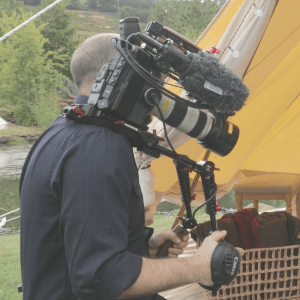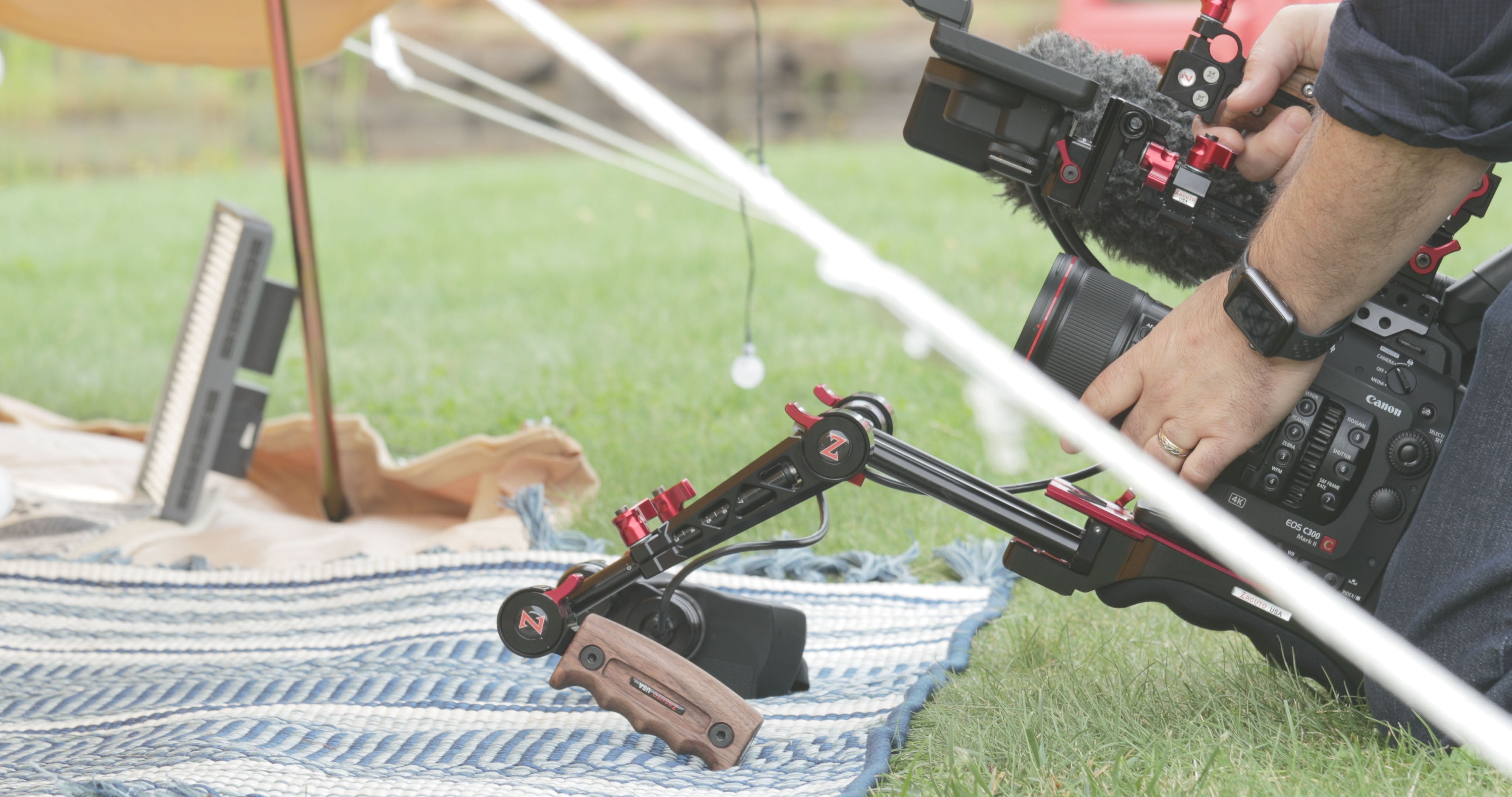
Zacuto Recoil Pro Review: Behind-the-Scenes Filming in Oregon Wine Country
from Slavik Boyechko
If you are a video producer in Oregon, chances are you eventually get to work somewhere in Oregon’s wine country. If you’ve never shot in a vineyard before, you might assume that you have the luxury of time to set up and capture the scenery, the people behind the wine, and of course, the grapes themselves.
After all, vines don’t move, and the grapes take their precious time to ripen. So, you set up a long motion lapse, pop open a 2016 Pinot Noir, and sit back for a relaxing shoot, right?
 Not exactly. Right around the time when the grapes are robust and look their best, when the nearby foliage colors are starting to turn, and when vineyards and tasting rooms become packed with visitors and staff, is also the time when the winery goes into overdrive to prepare for crush. There’s hardly a second of spare time to waste.
Not exactly. Right around the time when the grapes are robust and look their best, when the nearby foliage colors are starting to turn, and when vineyards and tasting rooms become packed with visitors and staff, is also the time when the winery goes into overdrive to prepare for crush. There’s hardly a second of spare time to waste.
 When it was time for an interview, we could easily fold the handles inward to make the camera easy to carry, snap it into a tripod with the VCT Tripod Plate, and capture an interview without missing a beat.
When it was time for an interview, we could easily fold the handles inward to make the camera easy to carry, snap it into a tripod with the VCT Tripod Plate, and capture an interview without missing a beat.


 Zacuto’s C300-C500 mounting kit is also what let me use the C300 Mark II clamshell monitor in a shoulder rig setup, without having to switch over to an EVF or a third party external monitor unit that doesn’t have the XLR inputs built-in. This was the thing that convinced me to hang up my reservations about shoulder rigs. I can use the C300 in its compact form on a shoulder, while easily moving to a tripod, monopod, or slider when the shot calls for it.
Zacuto’s C300-C500 mounting kit is also what let me use the C300 Mark II clamshell monitor in a shoulder rig setup, without having to switch over to an EVF or a third party external monitor unit that doesn’t have the XLR inputs built-in. This was the thing that convinced me to hang up my reservations about shoulder rigs. I can use the C300 in its compact form on a shoulder, while easily moving to a tripod, monopod, or slider when the shot calls for it.



 Not exactly. Right around the time when the grapes are robust and look their best, when the nearby foliage colors are starting to turn, and when vineyards and tasting rooms become packed with visitors and staff, is also the time when the winery goes into overdrive to prepare for crush. There’s hardly a second of spare time to waste.
Not exactly. Right around the time when the grapes are robust and look their best, when the nearby foliage colors are starting to turn, and when vineyards and tasting rooms become packed with visitors and staff, is also the time when the winery goes into overdrive to prepare for crush. There’s hardly a second of spare time to waste.
Let’s Get Started!
With that knowledge, my friend, and recent Oregon transplant, Jem Schofield of theC47.com, joined me for a shoot at one of the area’s most well-known wineries, Eola Hills. We were there to collaborate on a video for a local company that is all about glamping in Oregon. For the promo video, we had two things going for us: the tents weren’t going anywhere, and we had professional actors to play the part of glampers. What we didn’t have was a lot of time, or an opportunity to reschedule if the weather didn’t cooperate. Luckily, we had the new Recoil Pro with Dual Trigger Grips in for review, and after an effortless setup, we hit the streets, ahem, vines. (**Editors Note: Rig photos in this article are shown with dual grip red levers facing front. While this is usable, recommended use is with red quick-release levers facing to the back for easier access. See more rig photos for different cameras here.**)Problems and Zacuto Solutions
Right away, we were faced with a few challenges. First, the overcast conditions meant we couldn’t depend on wide or medium shots to portray the beauty of the scenery. And second, when you’re shooting inside a tent - even a deluxe glamping tent - you have to fit yourself and your camera within a very contained space. And, of course, the time component which meant we had to transition from B-roll to interviews quickly during the few moments the staff was available. Shooting with the Zacuto rig with flip-up Dual Trigger Grips made all that a breeze, especially when we had to adjust from a standing height, to placing the camera on the ground, or on an object inside the tent. The triggers enabled both me and Jem to grab the rig, quickly adjust the placement of the camera and handles to fit our shooting preference, and then adjust them again when we needed to shoot off the shoulder. When it was time for an interview, we could easily fold the handles inward to make the camera easy to carry, snap it into a tripod with the VCT Tripod Plate, and capture an interview without missing a beat.
When it was time for an interview, we could easily fold the handles inward to make the camera easy to carry, snap it into a tripod with the VCT Tripod Plate, and capture an interview without missing a beat.

Zacuto Recoil Pro Review for Canon C300 Mark II
What was most impressive to me was that we could shoot most of the time with a 70-200mm on our Canon C300 Mark II, which was necessary in order to frame out the overcast and dull sky. Being able to use a telephoto lens on a shoulder rig was quite impressive for me. It worked so well because it’s easier to support a heavy camera with both hands holding the dual grips, while the right hand can control focus with Canon’s DPAF toggle. To be honest I’ve never been much of a shoulder rig shooter. I’ve preferred combining a tripod, monopod, gimbal, and slider to capture a wide variety of shots, for both documentary and corporate video productions. A big reason for that is becaus I don’t like to build up a camera too much. I like using the base C300 Mark II setup, without an EVF or external monitor. Running around with a big shoulder rig setup has always seemed a bit burdensome to me. But the Trigger Grip system piqued my interest, because it enables a shoulder rig to quickly fold down into a compact size that can be used handheld, placed on the ground or a tabletop, or packed away in a bag, without having to disassemble the rig.
 Zacuto’s C300-C500 mounting kit is also what let me use the C300 Mark II clamshell monitor in a shoulder rig setup, without having to switch over to an EVF or a third party external monitor unit that doesn’t have the XLR inputs built-in. This was the thing that convinced me to hang up my reservations about shoulder rigs. I can use the C300 in its compact form on a shoulder, while easily moving to a tripod, monopod, or slider when the shot calls for it.
Zacuto’s C300-C500 mounting kit is also what let me use the C300 Mark II clamshell monitor in a shoulder rig setup, without having to switch over to an EVF or a third party external monitor unit that doesn’t have the XLR inputs built-in. This was the thing that convinced me to hang up my reservations about shoulder rigs. I can use the C300 in its compact form on a shoulder, while easily moving to a tripod, monopod, or slider when the shot calls for it.
The Final Result
On the shoot, both Jem and I enjoyed taking turns shooting, while being able to constantly adjust the placement of the grips to our comfort. Even our clients took a stab at trying the rig out, having never held a cinema camera or a shoulder rig before. The fact that the rig didn’t intimidate them speaks volumes about how friendly the Recoil Pro Rigs with Dual Trigger Grips are. Back at home, I wrote up my full-length review, and Jem made this video review with some behind the scenes footage with his own take on the system. He’s had a lot more experience with Zacuto rigs than I have, and he thought this was the best shoulder rig Zacuto has made to date. Jem actually rigged up his Canon C200, which is an even better camera to use with the Recoil Pro because the lightweight, touchscreen monitor keeps the camera’s center of gravity closer to the shoulder, rather than at the far front end of the camera. And the XLR inputs on the C200 body means you don’t have to add any audio accessories when you want to switch from shoulder shooting to a tripod interview at a moment’s notice. The one thing that would make a C200 or C300 Mark II even better on a Recoil Pro with Trigger Grips is one of Canon’s compact-servo lenses. With either the 18-80mm or the 70-200mm, you can control not only exposure and focus with the hand grip, but also the lens zoom. Which means you can keep both hands on the dual grips at all times. Except when you need a free hand to take a sip of some delicious Oregon Pinot Noir. ********** See more of Slavik's work at Video Dads and Digital Filmmaker. Twitter: @digifilmmaker Facebook: @digifilmmaker





Leave a comment